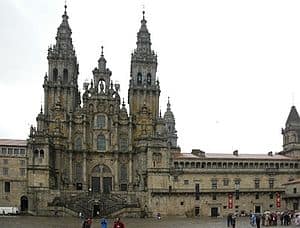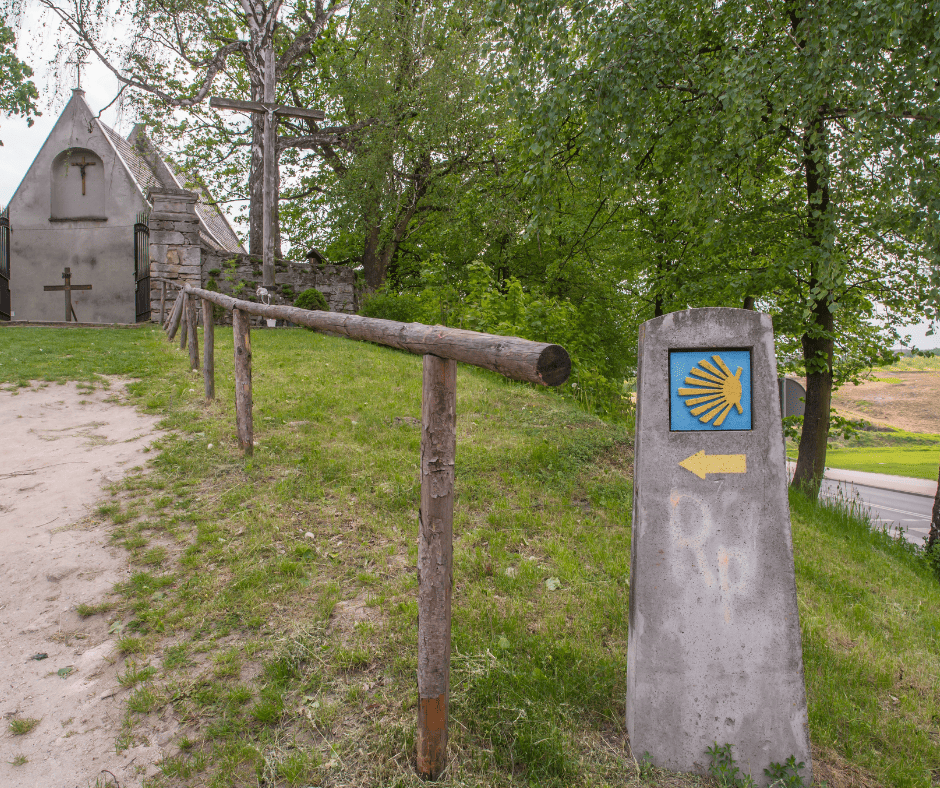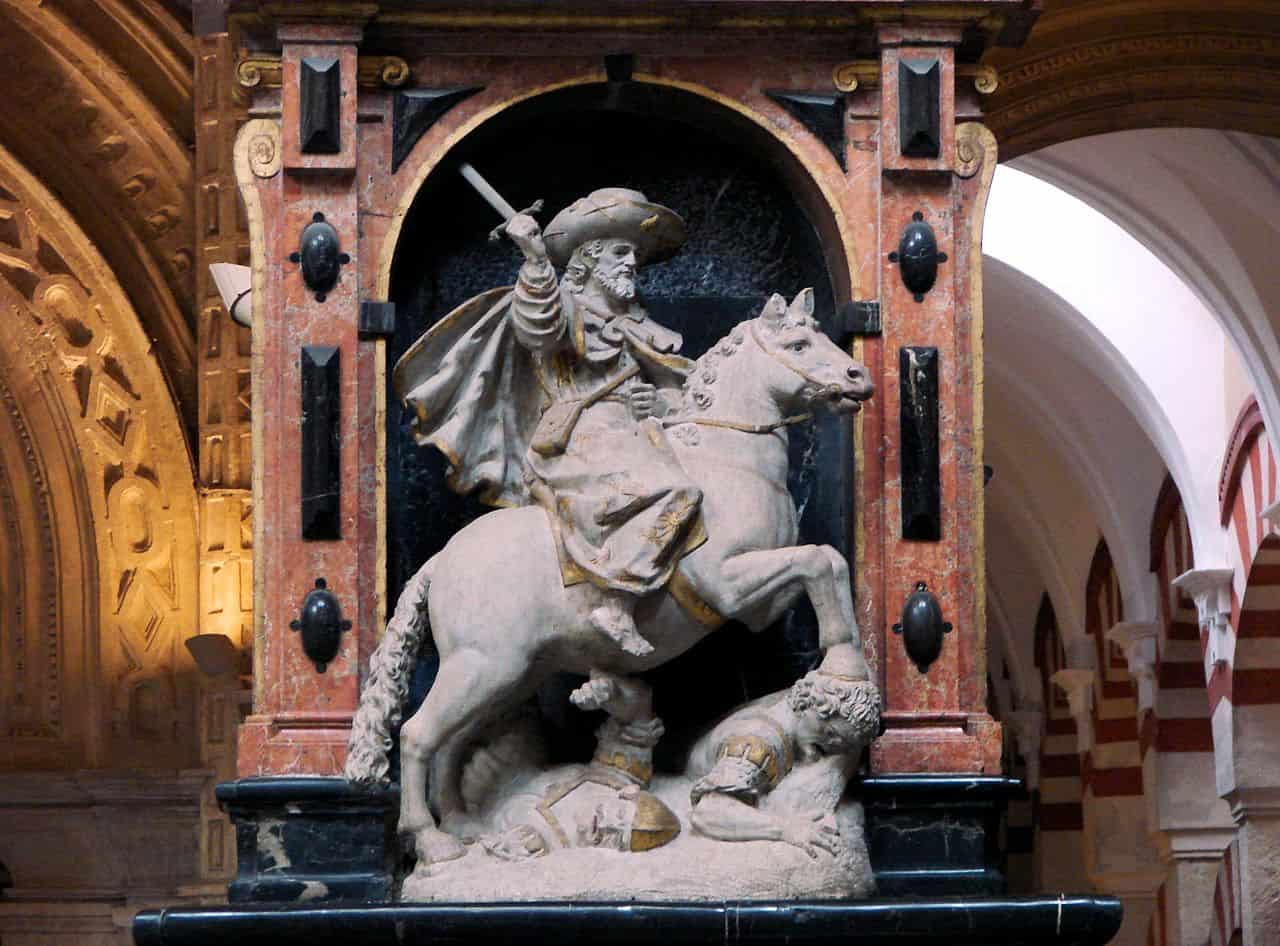The Way of St James, or St James’ Way, often known by its Spanish name the Camino de Santiago, is the pilgrimage to the cathedral of Santiago de Compostela in Galicia in north-westernmost Spain where the apostle Saint James the Great is said to be laid to rest.
The Cathedral of Santiago is the ultimate goal of the pilgrimage.
The Way of St James has been one of the most important Christian pilgrimages since medieval times and it has existed for over 1000 years. It was considered one of three pilgrimages on which all sins could be forgiven – the others being the Via Francigena to Rome and the pilgrimage to Jerusalem.
There is not a single route – the Way can be one of any number of pilgrimage routes to Santiago de Compostela. However, a few of the routes are considered the main ones. Santiago is such an important pilgrimage destination as it is considered the burial site of the apostle James the Great. Legend states that St. James’ remains were carried by boat from Jerusalem to northern Spain where they were buried on the site of what is now the city of Santiago de Compostela. In the middle ages, the route was highly traveled. However, reformation and unrest in 16th century Europe resulted in its decline. In the early 1980’s only a few pilgrims a year arrived in Santiago. However, since the late 1980s, the way has attracted a growing number of modern-day pilgrims from all around the globe. The route was declared the first European Cultural Route by the Council of Europe in October 1987 and inscribed as one of UNESCO’s World Heritage Sites in 1993.
St James as the Moor Slayer Wearing a Pilgrim Hat.
The earliest records of visits paid to the shrine dedicated to St James at Santiago de Compostela date from the 8th century, in the times of the Kingdom of Asturias. This was the most renowned medieval pilgrimage, and the custom of those who carried back with them from Galicia a pilgrim scallop shell as proof of their journey gradually extended to other forms of pilgrimage.
Across France and Spain, the pilgrimage route led from shrine to shrine, just as a caravan route leads from oasis to oasis.
The pilgrimage as penance
Once a system of penance had been established by the Church, part of the rituals of confession and absolution, pilgrimages were established as adequate punishments assessed for certain crimes. The Catholic Encyclopedia noted:
“In the registers of the Inquisition at Carcassone… we find the four following places noted as being the centres of the greater pilgrimages to be imposed as penances for the graver crimes, the tomb of the Apostles at Rome, the shrine of St. James at Compostella [sic], St. Thomas’s body at Canterbury, and the relics of the Three Kings at Cologne.”
Pre-Christian history of the route
Prior to its existence as a Catholic pilgrimage, the route is believed to also have had significance for the ancient pagan peoples of the Iberian peninsula, among them the Celts, and later the Romans who conquered Spain. The site of Santiago de Compostela itself may have been perhaps a Roman shrine.
To this day many of the pilgrims continue on from Santiago de Compostela to the Atlantic coast of Galicia to finish their pilgrimage at Spain’s westernmost point Cape Finisterre (Galician: Fisterra). Though many pilgrims today erroneously believe Cape Finisterre is also the westernmost point of mainland Europe, the fact that the Romans called it Finisterrae (literally the end of the world in Latin) indicates that they viewed it as a place of significance.
Pagan influences can still be seen along the Way; indeed some of the modern-day pilgrims themselves are attracted more to the pagan legends associated with the Way rather than the Christian.
The modern-day pilgrimage

Today thousands of Christian pilgrims and non-Christian pilgrims each year set out from their homes, or from popular starting points across Europe. The most popular route is the French Way or Camino Francés on which most pilgrims start from either Saint-Jean-Pied-de-Port on the French side of the Pyrenees or from Roncesvalles on the Spanish side. However many pilgrims begin further afield from cities such as Le Puy or St. Albain.
These modern-day pilgrims walk for weeks or months to visit the city of Santiago de Compostela. Some pilgrims travel on horseback or by donkey (The British author and humorist Tim Moore made his journey with a donkey); many also come by bicycle. In addition to people on a religious pilgrimage, there are many travelers and hikers who walk the route for non-religious reasons such as for enjoyment, travel, sport or simply the challenge of weeks of walking in a foreign land.
The Way’s name in other languages
The Way of St James has an often bewildering variety of different names in various European languages:
- In Galician it is O Camiño de Santiago and often also Ruta Xacobea
- In Basque it is Donejakue Bidea
- In Spanish it is usually called El Camino de Santiago
- In Catalan it is called the Camí de Sant Jaume de Galícia
- In Czech it is called the Cesta Svatého Jakuba
- In German it is called Der Jakobsweg or the more archaic Der Jakobusweg
- In French le chemin de Saint Jacques
- In Italian Cammino di Santiago
- In Polish Szlak św. Jakuba
- In Portuguese Caminho de Santiago

I love hiking, backpacking, and camping. From the Camino de Santiago to the West Highland Way in Scotland or simply a great day hike on the weekend. Hiking refreshes me, my mind, and keeps my body reasonably fit. So far I have walked three Camino routes and many other long distance hikes in the UK, Canada, and around the rest of Europe. One of the best was my hike up Ben Nevis.


